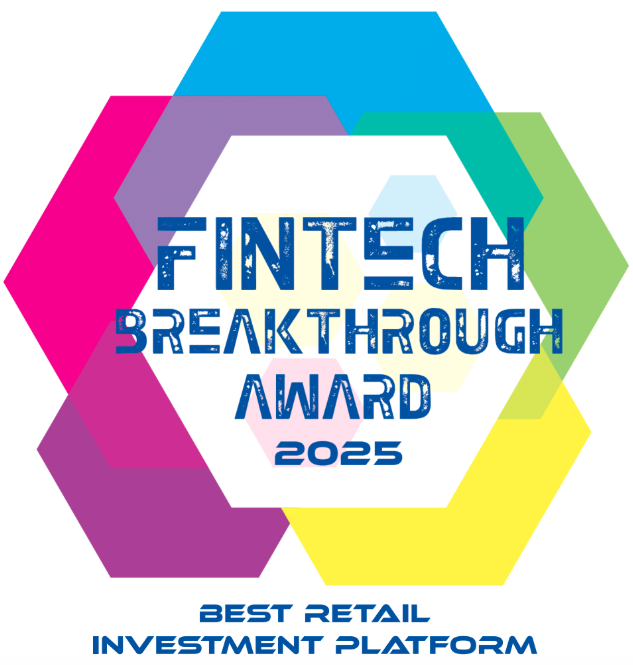The dream of harnessing the power that fuels the sun and stars to provide clean, virtually limitless energy on Earth is rapidly moving from science fiction to tangible reality. Nuclear fusion, the process of combining light atomic nuclei to release immense energy, promises a future free from carbon emissions and long-lived radioactive waste. Alongside fusion's rapid advancements, the broader field of advanced nuclear energy, including innovative fission technologies, is also making significant strides towards a cleaner energy portfolio.
Commercial efforts like Meta’s recently announced nuclear agreement with Constellation Energy are bringing more attention to the market. Meanwhile, breakthroughs and surging investment in pioneering companies like TAE Technologies, Commonwealth Fusion Systems, Helion Energy, and X-Energy are accelerating the timeline for this transformative energy era.
A Landmark Achievement + Continued Investment in Clean Nuclear Energy
The journey towards next-generation nuclear energy has been marked by steady progress, but recent announcements have signaled a significant uptick in momentum. Building on earlier milestones, such as the U.S. Department of Energy's (DOE) 2022 announcement of successful fusion ignition at Lawrence Livermore National Laboratory (LLNL), the advanced nuclear sector is buzzing with new achievements and financial backing. The private sector is at the forefront of this innovation. Let's explore some of the key players.
Fusion Energy Leaders
TAE Technologies: Pioneering a New Path to Fusion
California-based TAE Technologies aims to develop a safe and affordable source of commercial fusion power.
- Major Funding Boost: In early June 2025, TAE announced it had raised over $150 million in its latest funding round, with participation from major investors including Google, Chevron, and NEA. This brings their total equity capital to over $1.3 billion.
- The "Norm" Breakthrough: A pivotal development came in April 2025 with TAE's "Norm" experimental device. TAE reported that it successfully demonstrated stable plasma at temperatures exceeding 70 million degrees Celsius using a novel, simplified approach, promising to reduce future reactor costs by up to 50%.
- Roadmap to Commercialization: TAE is constructing its next-generation machine, "Copernicus," aiming for operations in 2025, followed by its first commercial fusion power plant, "Da Vinci," in the early 2030s.
Commonwealth Fusion Systems (CFS): Powerful Magnets for a Compact Future
Spun out of MIT, CFS is a research company that develops energy through an inexhaustible power plant.
- Strong Financial Backing: CFS has raised over $2 billion, with support from prominent investors like Bill Gates, Google, and Eni.
- High-Temperature Superconducting (HTS) Magnets: Their key innovation lies in powerful HTS magnets, which CFS claims will enable smaller, more potent, and commercially viable tokamak designs. The SPARC project is currently under assembly, marking a significant step forward.
- ARC Power Plant: CFS is now focused on developing ARC, a commercial-scale fusion power plant projected for the early 2030s, with plans to build it in Virginia.
Helion Energy: Direct Electricity from Fusion
Helion Energy is developing a magneto-inertial fusion technology to produce helium-3 and fusion power via aneutronic fusion, aiming to generate low-cost, clean electric energy using fuel derived exclusively from water.
- Microsoft Power Purchase Agreement: In a landmark deal announced in May 2023, Helion committed to providing Microsoft with at least 50 megawatts of fusion-generated electricity by 2028.
- Significant Funding: The company has secured over $1 billion to advance its magneto-inertial fusion technology.
- Technical Milestones: Helion reported that its Trenta prototype successfully achieved plasma temperatures of 100 million degrees Celsius, a critical step towards net electricity generation.
X-Energy: Advancing Fission with Small Modular Reactors (SMRs)
X-energy is an American nuclear reactor and fuel design engineering company specializing in the development of Generation IV high-temperature gas-cooled small modular reactors (SMRs) and TRISO fuel technology.
- Major Investment and Projects: In February 2025, X-Energy closed a $700 million Series C-1 financing round. They also submitted a construction permit application in April 2025 with Dow for a four-unit Xe-100 plant in Texas, supported by the DOE and aimed for operation in the early next decade. This project aims to serve industrial needs with clean power and steam.
- Xe-100 SMR: X-Energy is developing the Xe-100, a high-temperature gas-cooled Small Modular Reactor known for its inherent safety features. These reactors are designed to be factory-built and scalable.
- TRISO-X Fuel: Their proprietary TRISO-X fuel is designed to prevent meltdown scenarios.
An Ecosystem of Innovators
Beyond these companies, a vibrant global ecosystem is driving fusion and advanced nuclear forward:
- Tokamak Energy (UK): Making strides with compact spherical tokamaks and HTS magnets
- Zap Energy (USA): Pursuing a novel sheared-flow-stabilized Z-pinch fusion concept that could reduce complexity and cost
- The CEA’s WEST tokamak achieved a new world record for plasma duration of over 22 minutes in February 2025.
Many other startups and research institutions worldwide, including Focused Energy, ITER, Marvel Fusion, Kyoto Fusioneering, and Type One Energy, are exploring diverse approaches, from laser-driven fusion to advanced stellarator designs.
A Clean Energy Future
The path to decarbonizing our global energy system requires a multifaceted approach. While widespread commercial fusion power plants are still a thing of the future, the recent surge in breakthroughs and increased funding across the private sector are accelerating this timeline.
Simultaneously, advanced fission technologies are poised to deliver safe, reliable, and carbon-free power sooner, offering a vital bridge and complementary solution. The growing global energy demand, particularly from sectors like AI and data centers, underscores the urgent need for powerful, dependable, and clean energy sources.
While the clean energy market offers exciting opportunities, it also comes with risks. One important risk is the potential adverse impact of regulatory changes that de-incentivize clean energy. Such regulation could reduce the viability of clean technology businesses. Also, the high operational costs associated with building and scaling fusion technology, creates additional risk. These risks are important for potential investors to consider.
The future of energy is indeed looking brighter, with both fusion and advanced fission playing critical roles. As these pioneering companies continue to innovate and overcome challenges, the dream of an abundant, clean energy world moves ever closer to reality.
Explore opportunities in green energy with EquityZen.
Not all pre-IPO companies will go public or be acquired, and not all IPOs or acquisitions are or will become successful investments. There are inherent risks in pre-IPO investments, including the risk of loss of the entire investment, illiquidity, and fluctuations in value and returns. Investors must be able to afford the loss of their entire investment.
.png?width=96&height=96&name=image%20(5).png)




.png?width=812&height=446&name=Blog%20Cover%20Videos!%20(4).png)


